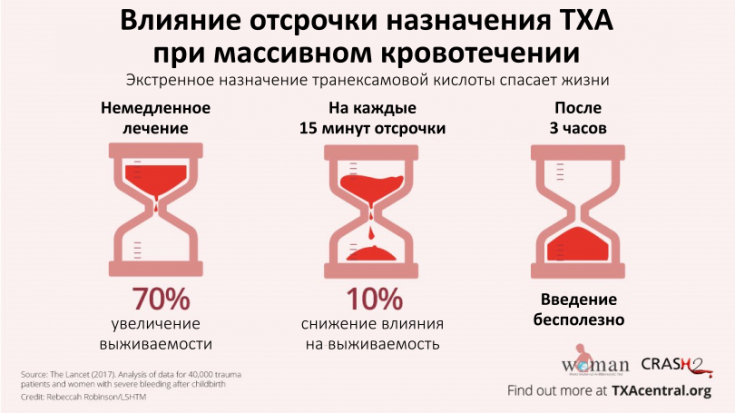Menorrhagia is an important cause of poor health in women. Medical therapy, in order to avoid possibly unnecessary surgery, is an attractive treatment option.
A large number of medications are available to reduce heavy menstrual bleeding, but in practice there is considerable variation and there is no certainty as to the most appropriate therapy.
Plasminogen activators are a group of enzymes that cause fibrinolysis (dissolution of clots). Increased levels of plasminogen activators have been found in the endometrium of women with heavy menstrual bleeding compared with women with normal menstrual loss.
Therefore, Plasminogen activator inhibitors (antifibrinolytic agents) have been promoted as a treatment for heavy menstrual bleeding. There is concern about the use of tranexamic acid due to possible side effects such as an increased risk of thrombogenic diseases (deep vein thrombosis).
Read more about the 2017 Cochrane Review data on the effectiveness of various antifibrinolytics in reducing menstrual bleeding in the estet-portal.com article.
Randomized trial results
All data from randomized controlled trials of antifibrinolytic therapy for the treatment of menorrhagia were obtained by electronic searches of MEDLINE 1966-1997, EMBASE 1980-1997 and the Cochrane Library.
Menorrhagia (abundant menstruation) — blood loss during menstruation, exceeding the physiological norm (~150 ml).
Women with postmenopausal bleeding, intermenstrual bleeding, iatrogenic or pathological causes of heavy menstrual bleeding were excluded.

Antifibrinolytic therapy compared with placebo showed a significant reduction in mean blood loss and a significant change in the mean reduction in blood loss.
Heavy periods: a cause for concern or a sign of illness
Antifibrinolytic agents were only compared with three other medical therapies: mefenamic acid, norethisterone administered in the luteal phase, and ethamsylate. In all cases, there was a significant reduction in mean blood loss.
Tranexamic acid was found to have a marginal benefit in participants' perception of reduced menstrual blood loss.
There were no significant differences in reported adverse events with tranexamic acid compared with luteal phase progestogens or withdrawal due to adverse events compared with NSAIDs and ethamsylate when these treatments were used for heavy menstrual bleeding.
Changes in quality of life and sexual life were significantly improved in the tranexamic acid group compared to the progestogen group. These results are in most cases based on only one study.
Follow us on Telegram
Tranexamic acid for menorrhagia as the treatment of choice
Antifibrinolytic therapy causes a greater reduction in objective measurements of heavy menstrual bleeding compared to placebo or other medical therapies (NSAIDs, luteal phase progestogens, and etamsylate). This treatment is not associated with an increase in side effects compared to placebo, NSAIDs, progestogens, or etamsylate.
Quality of life and sexual life improved significantly after therapy with tranexamic acid compared with oral progestogen, but no other quality of life measures were assessed. No study used drug cost as an outcome. There are no data in randomized controlled trials that would register the incidence of thromboembolic complications.
Thank you for staying with estet-portal.com. Read other interesting articles in the "Gynecology" section. You may be interested in Modern methods of resection and ablation of the endometrium in menorrhagia







Add a comment